Adverb Ki DefinitionAdverbs are important parts of speech that we utilize to add information and spice up our sentences with them. For instance, the statement Jessica walked is correct but somewhat boring. However, an adverb can be used to liven things up, as in the statement Jessica walked elegantly. If Jessica is slightly clumsy, we may also say she walks clumsily. We may create some tension by saying Jessica walked nervously. Finally, we can go beneath the water by stating Jessica walked underwater (Aren't adverbs wonderful?) 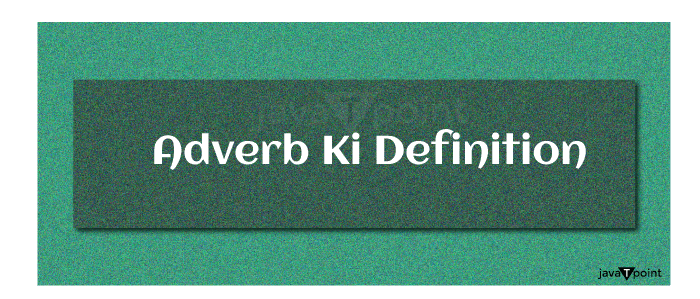
Adverbs were employed to alter verbs in all of our examples. Adverbs, on the other hand, can do so much more! But, before we go too far ahead of ourselves, let us first understand what are adverbs. What is an Adverb?Adverbs are words or phrases that modify verbs, adjectives, other adverbs, determiners, clauses, prepositions, or sentences. Adverbs often indicate the manner, location, time, frequency, degree, level of certainty, and so on, addressing queries like how, when, where, and to what extent. This is known as the adverbial function, and it can be carried out by a single term (adverbs) or by multiple-word adverbial phrases and clauses. Adverbs have long been considered an element of speech. Linguists today observe that the term "adverb" has come to be employed as a sort of "catch-all" class, used to define words with diverse forms of syntactic behavior, with nothing in connection except that they don't fall into any of the other existing categories. 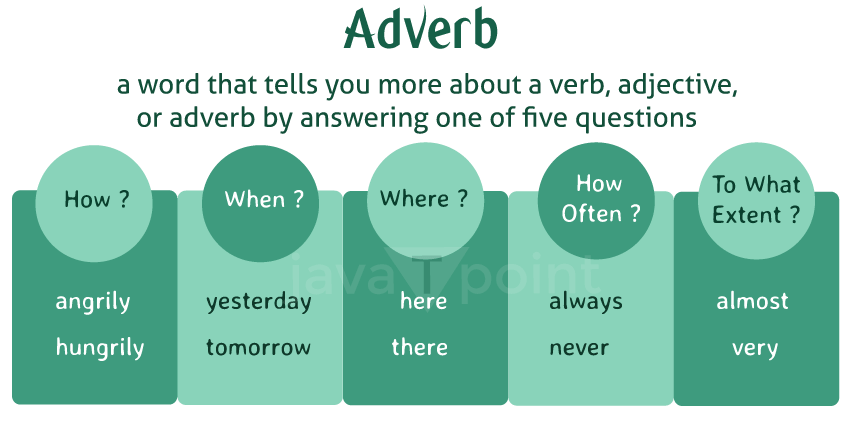
So, an adverb can be utilized to provide additional information about the verb or action in a statement, which is similar to how an adjective provides further details about the noun in an expression. It can also be used to describe an adjective or another adverb. The Meaning of an Adverb as Per DictionariesThe Oxford Learner's Dictionary defines an adverb as "a word that contributes additional information about place, time, manner, cause, or degree to a verb, an adjective, a phrase, or another adverb. " According to the Cambridge Dictionary, an adverb is "a word that describes or gives additional information about a verb, adjective, adverb, or phrase. " A comparable meaning may be found in the Merriam-Webster Dictionary. It describes an adverb as "a word that modifies a verb, an adjective, or another adverb and frequently utilized to show degree, manner, place, or time. " An adverb is described as "a word such as 'slowly,' 'now, ''very,' 'politically,' or 'fortunately' that add more details and information about the action, event, or situation stated in a clause." Adverbs can be employed to provide answers to inquiries such as "How?" "Where?" "When?" "How often?" and "How much?" In the expression Jessica will mop her bedroom today, for instance, the adverb indicates when Jessica intends to mop her bedroom. As another example, the term tremendously is used in the statement Daniel is incredibly fatigued to indicate that Daniel is exhausted to the point where he may fall asleep at any time. Adverbs Vs AdjectivesAdverbs, unlike adjectives (and most other elements of speech), can occasionally be relocated to another location in a phrase and still make grammatical coherence. This is usually achievable when an adverb modifies a verb. As an example,
Even if the adverb comfortably alters places, all three of the above expressions are grammatically valid and have the same meaning. However, when writing or speaking longer phrases, it is generally a good practice to keep the adverbs near to the verbs that alter in order to increase sentence clarity:
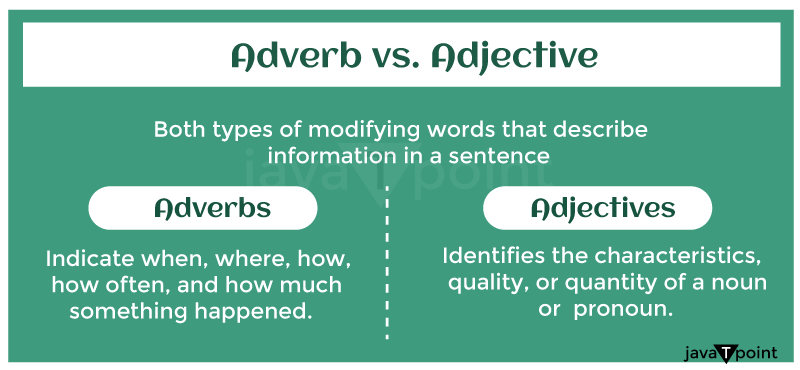
While the second phrase makes sense, it is more difficult to determine which term the adverb swiftly is meant to modify. The sentence is simpler to follow and understand when the adverb is near to the verb it changes. Adverbs that alter adjectives or other adverbs are often put directly preceding the word they change : Adjective: He was really starving . Another adverb: The insect crawled up the brick wall extremely slowly . When an adverb changes a whole sentence or clause, it is normally placed prior to the sentence/clause it changes and is followed by a comma: Fortunately, the newlyweds arrived just in time for the ceremony. Functions Of AdverbsAdverbs, which have traditionally been considered one of the parts of speech, fulfill a wide range of roles, making it impossible to approach them as a single, cohesive category. Adverbs, especially those ending in -ly, are simple to recognize. Adverbs typically serve to present an expanded view by explaining in detail how anything occurs, such as
This role of providing additional details on how things are done is known as the adverbial function, and it can be performed through the use of adverbial clauses, adverbial phrases, including stand-alone adverbs. There are several criteria for employing adverbs, and these regulations usually differ based on the kind of adverb. By following these basic concepts, and using adverbs to make statements richer in meaning will become second nature to you. Adverbs tend to be helpful in modifying verbs. The subsequent one of these two statements is far more interesting merely since it contains an adverb: The kitty rushed. (You can imagine a kitty fleeing, but you don't know a lot else about the situation.) The kitty rushed happily. It gives you a picture that the kitty is rushing/ running around happily, waving and breathing with enthusiasm, and seeming happy to meet its human owner. When you know how or why the kitty runs around, you can build a far more captivating imaginary image.) Adverbs are usually created by putting the letters "-ly" to adjectives. This makes detecting adverbs in phrases quite simple. There are multiple exemptions to this rule, including everywhere, nowhere, and upwards. An adverb is often utilized to change an adjective while improving its meaning. As an example:
You'll see how adverbs change other words and phrases by adding information about the location, time, manner, assurance, frequency, or other aspects of action expressed by the verbs or verb phrases in the statements. Adverbs In Sentences: How Are They Used?Adverbs in a sentence give context by expressing how, when, where, and to what degree something occurs. Adverbs can be used to change the meaning of verbs, adjectives, along with other adverbs. Adverbs that change verbs, adjectives, and adverbs are examples.
Adverbs may additionally be employed to alter entire sentences by conveying a point of view or providing an assessment. These adverbs (called sentence adverbs) are usually separated by commas. Adverbs in sentences are an example .
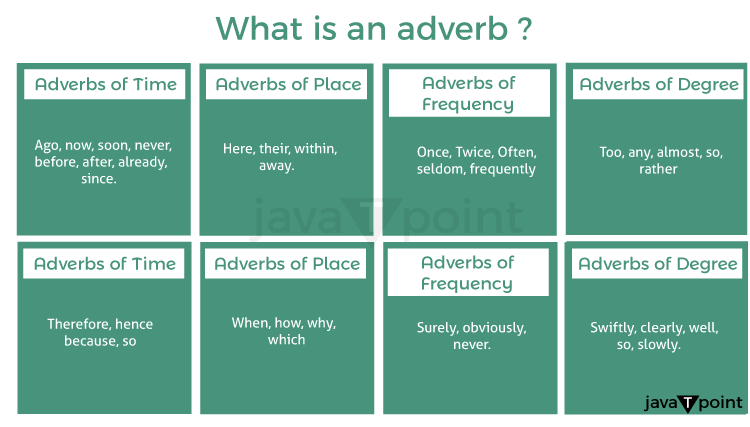
Types Of AdverbsAdverbs can be of various types, read on to learn about the various kinds of adverbs and its usage with the help of examples; Adverbs Of MannerAn adverb of manner specifies how an activity is carried out or how it occurs. Adverbs of manner are usually used after the primary verb. Adverbs of manner in a statement, for example
If the verb has a direct object (something being performed upon), the adverb should come before or after the verb. It shouldn't ever be used betwixt a verb and its object (in the instances below, "the textbook" is the object). Adverbs of manner and direct objects are two examples.
Adverbs of DegreeAdverbs of degree are utilized to convey the scope or degree of a verb, adjective, or adverb. Degree adverbs comprise "extremely," "absolutely," "slightly," "quite," and "enough." Adverbs of degree in a statement are one example .
Adverbs Of PlaceAn adverb of place describes the place of the action (for example, position, distance, and direction). Adverbs of location are often used after the primary verb of a phrase. "Adverbs of place" in a phrase, for instance .
Note: Some words can function as both a location adverb and a preposition. Adverbs are used when a statement lacks an object (for example, "Come inside"). A preposition is used when a statement includes an object (for example, "Come inside the building").Adverbs Of TimeAdverbs of time (for example, "yesterday," "today," and "tomorrow") expresses when or the time-period something occurs. They are usually used at the conclusion of sentences. Examples: Adverbs of time in a statement
Adverbs of duration (e.g., "temporarily," "forever," "shortly") differ differently in that they express the amount of time something occurs . For instance: Adverbs of duration in a statement
Adverbs Of FrequencyAdverbs of frequency expresses how frequently something occurs. They are classified into two types based on how detailed they are. 1. Adverbs of indefinite frequency (e.g., "always," "sometime," "never") indicate how frequently something occurs but do not provide a specific period. Adverbs with an indeterminate frequency are often used before the main verb . For instance: Adverbs of indefinite frequency in a statement
2. Adverbs of definite frequency (e.g., "hourly," "daily," "bi-weekly") describe how frequently something occurs in greater detail. They are usually seen at the conclusion of a sentence . For instance: Adverbs of definite frequency

Adverbs Of PurposeAdverbs of purpose (also known as adverbs of reason) describe why things are the way it is. Several purpose adverbs serve as conjunctive adverbs.Other adverbs of intent are frequently adverbial phrases rather than a single word. For instance: Adverbs of purpose in a statement The business made an immense profit; consequently, the employees were given increases . Since you're on vacation, I will call back later on . Conjunctive AdverbsConjunctive adverbs (also known as linking adverbs) link two independent sentences by making the second clause an adverbial modification of the first. They can be utilized to present a consequence, situation, a comparison, contrary, or an explanation. Conjunctive adverbs in a statement are an example. The wedding is set to take place tomorrow. However, we no longer have a contractor. Kelly's financing proposal was refused, thereby she will be unable to continue her study. NoteConjunctive adverbs are frequently mixed up with coordinating conjunctions (for eg., "and," "but"). Conjunctive adverbs, unlike coordinating conjunctions, cannot properly join two sentences. Conjunctive adverbs, on the other hand, are normally separated from a previous phrase by a period or semicolon as well as accompanied by a comma.
Adverbs With FocusFocusing adverbs are used to highlight a certain section of a statement. They are usually placed next to the word they are emphasizing. The following are some examples of emphasizing adverbs: "only," "just," "especially," "even," "either," and "neither." Examples: Focusing adverbs in a statement
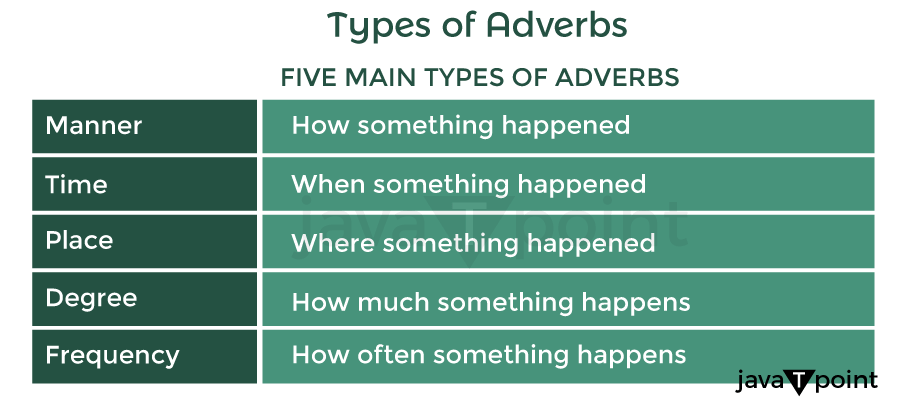
Interrogative AdverbsTo initiate an inquiry, the interrogative adverbs "when," "where," "why," and "how" are employed. Interrogative adverbs in a statement are an example .
Relative AdverbsThe relative adverbs "where," "when," and "why" are used to start dependent or relative clauses (clauses with a subject as well as a verb but no full idea). Relative adverbs in a sentence are an example.
Compare Two Or More ElementsAdverbs, like comparative and superlative adjectives, can be used to compare two or more things. Before employing adverbs in comparisons, study the rules for comparative and superlative adjectives. To summarize, when we compare two individuals or objects, we usually use a term end in -er or the words more or less. When comparing more than three individuals or objects, we usually use a term ending in -est, as well as the words most or least.
What Is an Adverb Clause?Although adverbs are individual words, a complete sentence can also act as an adverb. This is known as an adverb clause. Adverb clauses, like the majority of dependent clauses, normally start with a conjunction like before, because, if, or whenever. Adverb clauses, although being complete clauses, are employed in the same manner as normal adverbs are: to alter verbs, adjectives, or other adverbs. For instance, the adverb clause before the mall shuts alters the verb depart in the statement. We need to leave prior to the store closes. Examples Of Adverb ClausesAdverb clauses can be used in a variety of ways:
As an example,
How Do Adverbs Work?Adverbs can be used in a variety of contexts. They can be used to change verbs, adjectives, other adverbs, even whole phrases. Adverbs frequently explain us how, when, where, why, how frequently, or to what extent something occurs. Change AdjectivesAdverbs can be used to alter adjectives. They frequently occur directly next to the word that they change.
Alter The VerbsAdverbs can be used to alter verbs. Adverbs may not always occur directly next to the verb that they change when they change it .
When it comes to verbs, you should be especially cautious about a form of verb called as a connecting verb. Linking verbs are frequently employed to connect a noun or pronoun to its subject complement. Adverbs are not employed to alter nouns or pronouns, nor are they subject complements. If you find a connecting verb in a phrase, reconsider employing an adverb. Consider the following sentence : The property looks poor . Looks is a connecting verb in this phrase. It is used to characterize a property's quality by attaching the adjective bad with the noun home. Consider the following sentence : The home looks badly . Since home is a noun, and adverbs can not alter nouns, the adverb badly can only change the word appears in this phrase. This line implies that the home is bad at observing things, which is incorrect. As you can see, knowing how to recognize connecting verbs is critical so that you avoid utilizing an adverb when you require an adjective. Change Other AdverbsAdverbs have the ability to alter other adverbs. Adverbs, like adjectives, normally stick exactly next to the word they alter when they're utilized to describe another kind of adverb.
Change Entire Clauses/SentencesWhen a single adverb modifies an entire phrase or clause, it is usually put before the item being modified and followed by a comma:
Adverbs Are Catch-All CategoryAdverbs are regarded a component of speech in classical English grammar and continue to be treated as such in school grammar and dictionaries. Contemporary grammarians, on the other hand, realize that words usually classed together as adverbs perform a variety of purposes. Adverbs are sometimes referred to as a "catch-all" category that encompasses any words that do not belong to another portion of speech. A logical technique to classifying words is based on understanding which words may be used in which situation. For example, only nouns can be added into the following template to produce a grammatical sentence: The _____ is blue. (For instance, "The pen is blue.") When using this method, it is clear that adverbs fit into a variety of groups. Some adverbs, for instance, may be used to alter a whole phrase, whilst others cannot. Even though a sentential adverb serves many purposes, the meaning is not always the same. For instance, the word naturally can have various meanings in the sentences The woman gave birth naturally and Naturally, the woman gave birth: in the first statement, as a verb-modifying adverb, it refers to "in a natural way," whereas in the second statement, as a sentential adverb, it implies "of course." While numerous adverbs may be employed in a number of these functions, it may appear to be splitting hairs to suggest that a single adverb is actually two or more words that fulfill multiple functions. This difference, however, can be beneficial, especially when contemplating adverbs like naturally, which have diverse meanings in their various uses. Grammarians struggle to classify negative terms such as the English not. Although historically classified as an adverb, this word does not function grammatically like any other, and it should probably be classified as a noun.
Next TopicAmplitude Definition
|
 For Videos Join Our Youtube Channel: Join Now
For Videos Join Our Youtube Channel: Join Now
Feedback
- Send your Feedback to [email protected]
Help Others, Please Share










